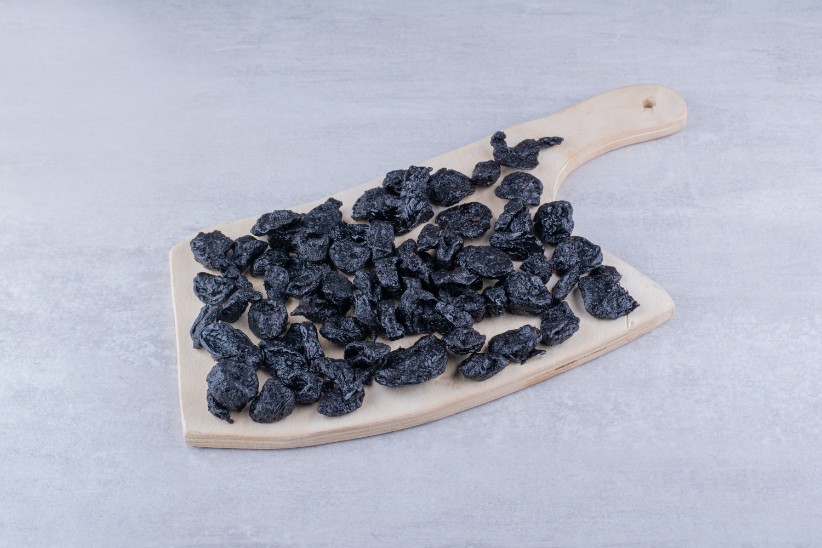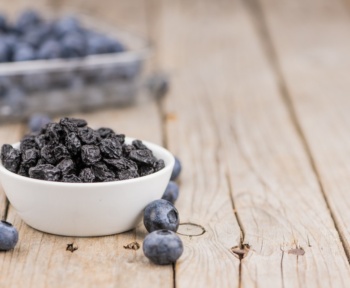Introduction
Freeze-drying is one of the best ways to preserve food while maintaining its nutrients, flavor, and long shelf life. When it comes to fruits, freeze-drying blueberries is an excellent way to keep their vibrant taste and numerous health benefits intact. In this blog, we will dive into everything you need to know about freeze-drying blueberries at home. Whether you’re in the UK or the USA, this guide will help you understand the process and give you tips on how to use freeze-dried blueberries in your daily life.
What is Freeze-Drying?
Freeze-drying, or lyophilization, is a food preservation method that removes all moisture from the food through sublimation. This process involves freezing the food, reducing the pressure, and heating it so the frozen water sublimates directly from a solid state to vapor, bypassing the liquid phase.
Unlike traditional drying methods, freeze-drying retains the food’s structure, taste, and nutrients. For fruits like blueberries, this method ensures they maintain their antioxidants, vitamins, and minerals while extending their shelf life by years.

Benefits of Freeze-Drying Blueberries
Freeze-drying blueberries offers several advantages over other preservation methods. Below are some of the key benefits:
- Nutritional Retention
Freeze drying retains up to 97% of a blueberry’s original nutrients. This means the antioxidants, vitamins (like Vitamin C and Vitamin K), and minerals are preserved, making freeze-dried blueberries just as healthy as fresh ones.
- Long Shelf Life
Unlike fresh blueberries, which spoil quickly, freeze-dried blueberries can last up to 25 years if stored correctly. This makes them a great option for long-term storage and emergency food supplies.
- Portability and Convenience
Freeze-dried blueberries are lightweight and easy to store. You can take them anywhere—hiking, camping, or simply snacking. Their portability and convenience are unmatched.
- Minimal Flavor Loss
Freeze-drying ensures that blueberries’ natural flavor is retained. Unlike dehydration, which can cause fruits to lose some taste, freeze-dried blueberries keep their vibrant and tangy flavor intact.
Step-by-Step Guide: How to Freeze-Dry Blueberries at Home
Ready to try freeze-drying at home? Follow these steps:
Step 1: Prepare Your Blueberries
Start by washing your blueberries thoroughly to remove any dirt or pesticides. Pat them dry with a paper towel to remove excess moisture. Ensure that the blueberries are fresh, ripe, and firm, as this will produce the best results.
Step 2: Pre-Freezing
Although optional, pre-freezing your blueberries is highly recommended. Please place them in a single layer on a baking tray and freeze them for a few hours. Pre-freezing helps speed the freeze-drying process and keeps the blueberries from clumping together.
Step 3: Place Blueberries in a Freeze Dryer
Now, it’s time for the actual freeze-drying process. If you have a home freeze dryer, place the pre-frozen blueberries inside the machine. The freeze dryer will then freeze the blueberries further and start the sublimation process, turning the frozen water inside the berries into vapor. 
Step 4: The Freeze-Drying Process
The process involves two stages: freezing and sublimation. During the first stage, the blueberries are frozen below -40°C (-40°F). In the second stage, sublimation occurs, where the frozen water in the berries turns directly into gas, leaving them dry and crispy. Depending on your machine, this process can take anywhere from 20 to 40 hours.
Step 5: Storing Freeze-Dried Blueberries
After freeze-drying, transfer the blueberries into airtight containers or vacuum-sealed bags to prevent moisture from getting in. Store them in a cool, dry place away from sunlight for optimal shelf life.

Checklist: What You Need to Freeze-Dry Blueberries
Before you get started, make sure you have everything you need:
- Fresh Blueberries: High-quality, ripe, and firm berries.
- Freeze Dryer: Essential if you want to use the freeze-drying method at home.
- Freezer: Optional but recommended for pre-freezing the berries.
- Airtight Containers: These are for proper storage post freeze-drying.
- Vacuum-Sealer: If you’re storing for long-term use.
Alternative Methods to Freeze-Drying Blueberries
Not everyone has access to a home freeze dryer, but there are alternative methods for preserving blueberries:
Dehydration
Dehydration is a common method for drying blueberries, but it only retains so many nutrients as freeze-drying. It also results in a chewy texture rather than freeze-dried blueberries’ light and crispy feel.
Traditional Freezing
Freezing is another option. While it retains the berries’ nutrients, once thawed, the texture changes to soft and mushy. On the other hand, freeze-dried blueberries maintain their original shape and texture.
Tips & Best Practices for Freeze-Drying Blueberries
Here are some essential tips to ensure your freeze-dried blueberries come out perfect:
- Use Fresh Blueberries: The fresher the berries, the better the outcome. Avoid overripe or bruised berries.
- Pre-Freeze for Faster Results: Pre-freezing speeds up freeze-drying and prevents the berries from sticking together.
- Proper Storage: Always store freeze-dried blueberries in airtight containers to prevent moisture absorption.
- Rehydrate Before Use (Optional): To rehydrate your freeze-dried blueberries for baking, soak them in water for a few minutes to restore their soft texture.
Creative Ways to Use Freeze-Dried Blueberries
Freeze-dried blueberries are versatile and can be used in many creative ways:
- Smoothies and Shakes: Add them directly to smoothies for instant flavor and nutrition.
- Trail Mix: Mix freeze-dried blueberries with nuts, seeds, and other dried fruits for a healthy, portable snack.
- Baking: Incorporate freeze-dried blueberries into muffins, cakes, or pancakes for added flavor without adding moisture.
- Garnishes: Use them for salads, oatmeal, or yogurt bowls.
Interview: The Science Behind Freeze-Drying
In this interview, we delve into the fascinating world of freeze-drying with a leading food scientist specializing in food preservation techniques. We’ll explore the scientific principles that make freeze-drying an effective method for preserving blueberries and other fruits, ensuring maximum retention of nutrients and flavor. As the expert states,
“Freeze-drying not only preserves the integrity of the fruit but also enhances its versatility in various culinary applications.”
Discover how the freeze-drying process works, its advantages over traditional preservation methods, and what consumers should look for when purchasing freeze-dried products. Join us as we unravel the science behind this innovative food preservation method and its impact on the future of healthy eating.
Conclusion
Freeze-drying blueberries is a great way to preserve their flavor, texture, and nutrients for years. With the right equipment and proper storage, you can enjoy freeze-dried blueberries as a healthy, convenient snack anytime. Whether in the UK or the USA, this guide provides all the information you need to start freeze-drying blueberries home. For more tips on freeze-drying and preserving other fruits, visit the “Dried Fruits Guide.”










